Riding the Ella Odyssey: Leaving from Badulla (Part 2 of 5)
(In case you missed it, here is a link to Part 1)
We arrived at the Badulla Railway Station a little before 9:00 am. The train was scheduled to leave at 9:15.
There are advantages to doing things differently than the crowds besides just being more likely to get tickets. One is most tourists don’t go as far as Badulla, so the seating was completely open when we got on the train, and we were the only people in our car. Since no one else was there, we found seats that were better centered on a window and on the side we had determined would be the best during the trip up.
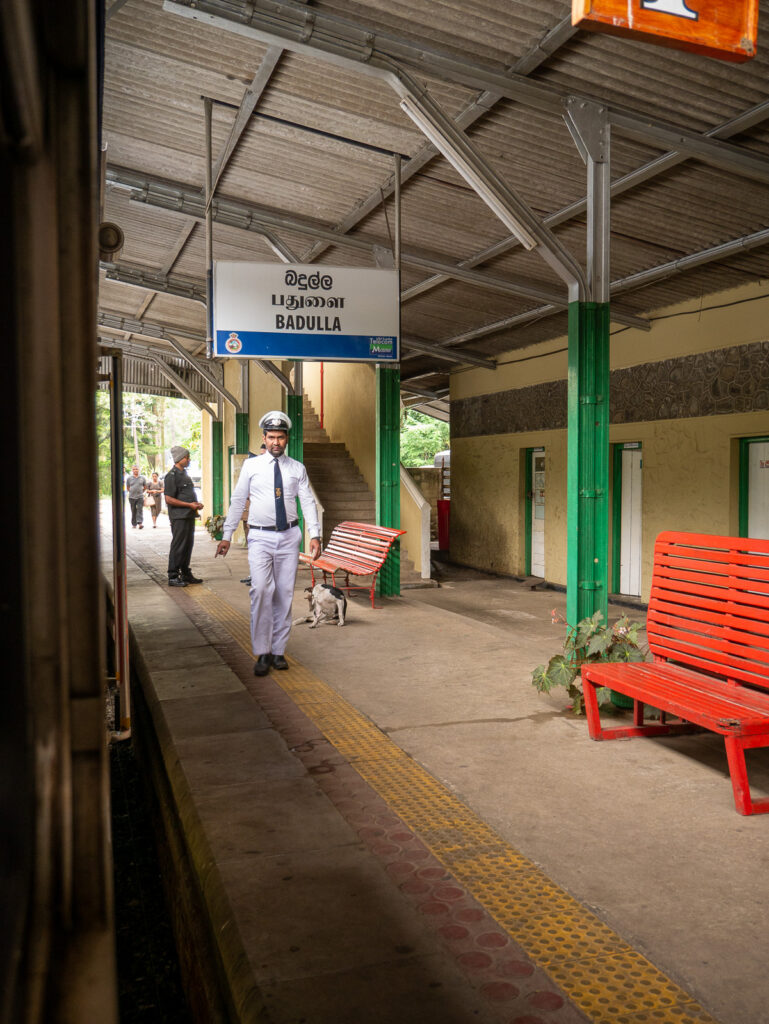
A conductor making final checks before departure.
Despite Badulla being the end of the line, Ella is the far more popular place to stop and explore. It is also a better place from which to head to the southern game parks and beaches. Because of this, trains tend to empty in Ella and few travel the last half hour of the line to the terminus. With Little Adam’s Peak, the spectacular Ella Rock, a quaint, foody town center, and other attractions, Ella is a top ten location to visit when traveling to Sri Lanka. As a result, the crowds tend to get off at Ella, and we practically had the train to ourselves.
Because there were so few on the train, we also got the chance to meet railway personnel. We met one of the engineers and talked together until he needed to go forward so the train could pull out. An operations manager was on the train and seemed to single us out for his attention, fancying himself as something of an authority on the line (which he turned out to be) and always appearing out of nowhere to be sure we knew where to take the best photos. He also made sure we got our lunch order in so that it would be ready to pick up when we got to Nanu Oya.
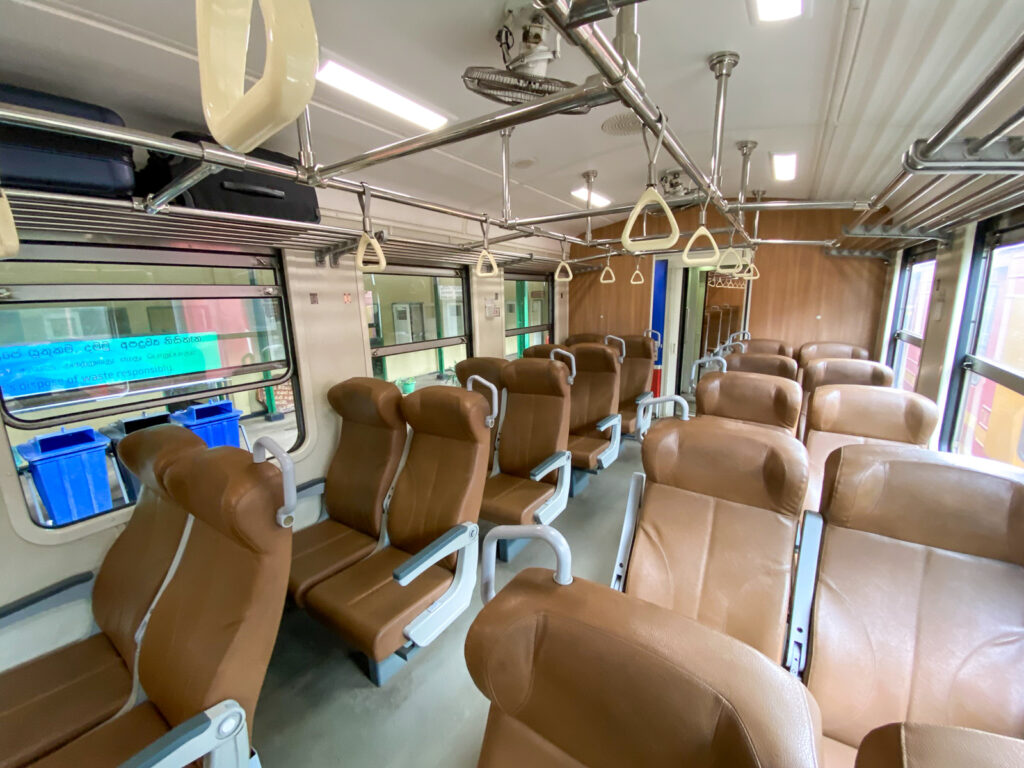
The Ella Odyssey is a bit nicer than the regular trains (and the bathrooms are cleaner.)
Before leaving the station, we opened the windows near our seats and on the opposite side of the car so we could lean out to take pictures. On most trains in Sri Lanka, air-conditioned first class is the better choice because of the general heat and humidity of the country (and the tickets are still reasonably inexpensive), but the air conditioning also means the windows don’t open. Because the high country is cool, we’d been advised to travel second class if we wanted to take lots of pictures and not have to do it through dirty glass. This turned out to be true. With the windows open, you can also lean out and enjoy the cool mountain breeze from the slow-moving train. There’s no place else on the island you’re not sweating outside except at these elevations, so we relished the opportunity to comfortably wear our jeans and long sleeves for the first time since we’d unpacked in Colombo.
We pulled out of Badulla Railway Station at 9:15 am—exactly on time.
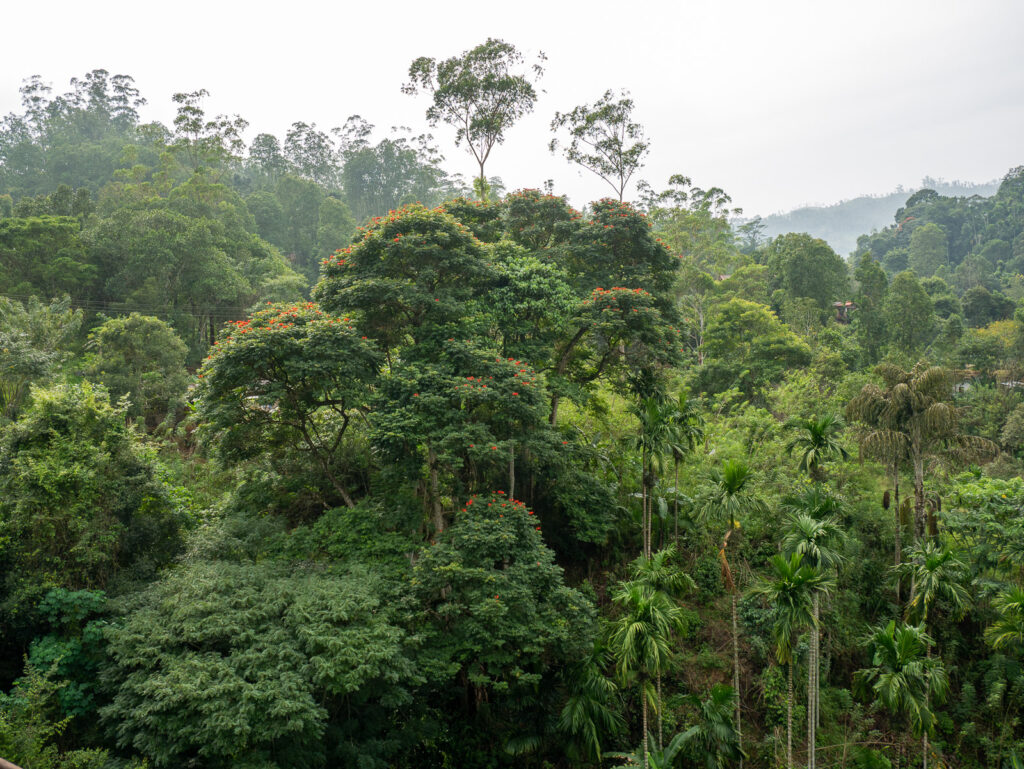
A rhododendron with its bright red flowers.
The first leg of our ride wound through the Uva Basin and along the Badulu Oya (oya means “river” or “stream” in Sinhala) towards the Demodara Dam. This is a nice stretch of wild rainforest and one of the least populated areas along the track. There are some nice vistas and a lot of greenery, only occasionally invaded by the bright red blossoms of rhododendron trees. The views are not as spectacular as between Ella and Nuwara Eliya, but it’s still a beautiful stretch. Once the train was underway, we moved to whichever seats offered the best views at the moment and snapped pictures.
The Demodara Loop
Before reaching Ella, Demodara is the first train station where the Ella Odyssey stops. We were told it was unique because it is the only station in the world that sits above a tunnel over its own track. When the railway construction came from Ella into the Uva Basin, the engineers had a problem: The grade after Demodara down alongside the Badula Oya would exceed the 1-to-44 maximum incline ratio allowed by the government railway regulations. It was too steep, and trains would have a hard time making the climb or descent, especially if the tracks were wet.
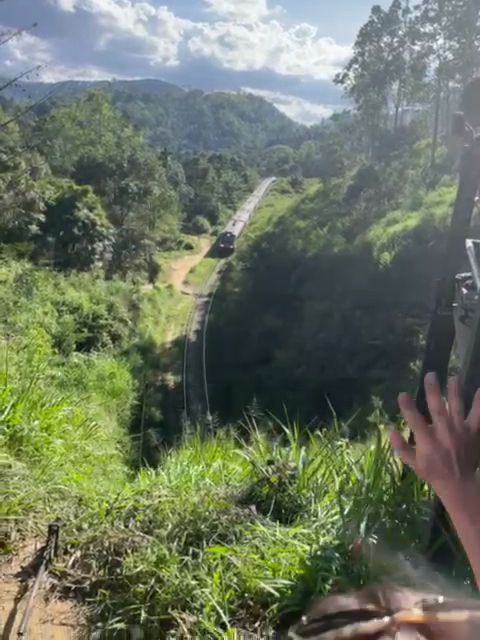
A train circling back to go through the tunnel beneath the station.
The legend is the solution came from the upcountry railway chief designer and project manager, Devapura Jayasena (D.J.) Wimalasurendra. One day he observed a local tea estate supervisor unwind and then rewind his turban around his head. He wondered if he couldn’t wind the railway tracks around the mountainside in the same way, giving them more distance to drop the level and emerge along the river more comfortably.
The result was this loop that travels around the side of the mountain from Demodara Station for nearly a kilometer and then through a tunnel immediately beneath the station it just left. The Odyssey stops long enough here that you can go over to a platform where you can see the train circling back to go into the tunnel beneath the station it just left.
This loop is a small but significant example of the Sri Lankan penchant for ingenious, out-of-the-box problem-solving. (Another we experienced was a guide who figured out how to use binoculars as a telephoto lens for an iPhone, but that was a different adventure. Try it. It’s not as easy as it sounds.)
Nine Arches: “The Bridge in the Sky”
A few minutes further is the next stop: the Nine Arches Bridge—also called “The Bridge in the Sky” because of its height. Most trains don’t stop here, but the Odyssey does since Nine Arches is one of the most sought-out attractions in Sri Lanka, especially for train enthusiasts.
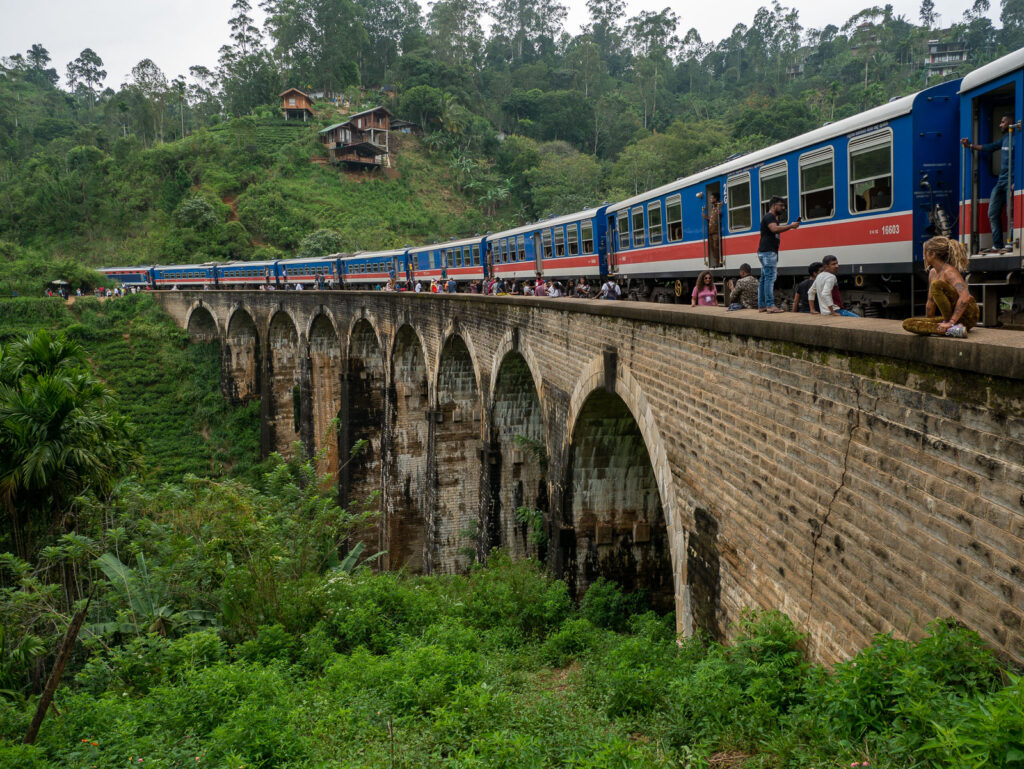
The most popular photo op in Sri Lanka.
Arriving at the bridge on the train, we felt a bit like rock stars. The bridge was covered with admirers who had come just to witness a train crossing the bridge and snap a picture or twelve. The bridge itself is an Instagram celebrity. (Just check out #ninearchesbridge.)
Nine Arches is legendary for a number of reasons, let alone its idyllic, lush setting and the elegant curves of its columns. Legend tells us the bridge was built under the supervision of P. K. Appuhami in cooperation with British engineers. Appuhami was born in 1870 and lived in the hill country in Kappatipola in Melimada (higher in the mountains to the north). He was a drummer and “demon dancer,” a tradition celebrating the most ancient of Sri Lankan religious expressions. P.K. was on his way home from a competition of thovil (exorcism of illness) dances, still wearing his demon costume and somewhat dejected because he had lost. As he moped along, he happened upon a British official who was surveying for the railway near where Ohiya Railway Station is today. Appuhami’s appearance initially startled the surveyor—perhaps, in his ignorance, he thought it was a cannibal or something like that—which led to a conversation about what each man was doing. Learning about the railway work, Appuhami offered to find local labor for the construction. The two men became friends and Appuhumi was eventually appointed as a foreman.
By 1913, work had progressed past Ella and plans were being drawn up for a bridge that would need to span 300 feet roughly 100 feet above a marshy quagmire just beyond a tunnel between Ella and Demodara. Engineers felt the best option was to build it with steel, but the Great War (WWI) had just begun, and Britain had no steel to spare for a bridge in Ceylon—it was all diverted to projects they felt necessary to defeating the Kaiser. Construction ground to a halt. Appuhumi, however, suggested there were other options besides steel—Sri Lankans had, after all, been building huge structures for over two thousand years without it.
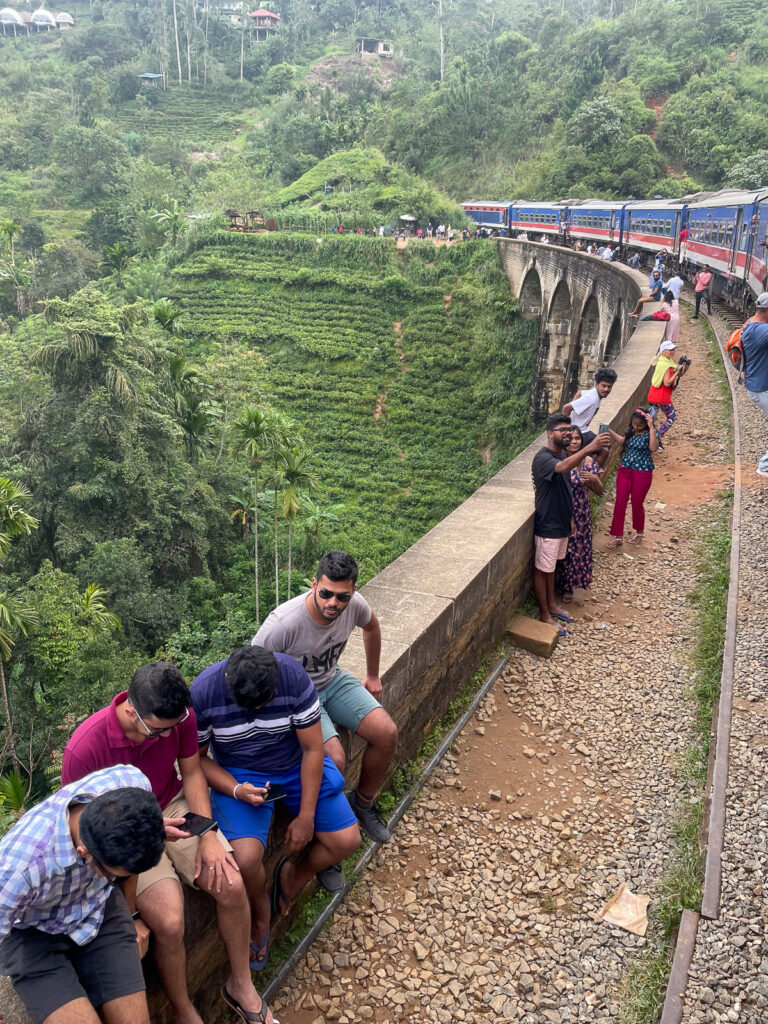
It turns out selfies have no borders.
Appuhami’s plan began with toppling boulders into the marshy area to create a foundation. Then the bridge itself could be constructed on these with bricks and cement. British engineers were convinced it wouldn’t be strong enough, but with no other prospects, they apparently figured, “Why not give it a try?”
Appuhami and his team went to work. A solid base was created under Appuhami’s direction, and construction of the bridge columns began. Nine archways were created to support the viaduct above and allowed the stream that fed the marsh to flow through unimpeded below.
Designers and engineers thought the bridge would take several years, but Appuhami and his team finished it in less than a year and far below budget. These facts only furthered doubts about the bridge’s dependability. How could a people with no history of advanced civil engineering build something that would stand the test of an actual train? Many thought it would collapse the first time one crossed—Appuhami, however, said he was so confident of the construction, he would lie under the bridge while the first train passed above. In the end, not only did the bridge survive that first crossing, but every crossing in the subsequent century and beyond.
The bridge was commissioned in 1921, and you can read the date “1920” stamped onto the sides of the rails on the bridge. Sri Lankans will proudly tell you that because of its superior construction, it still has no cracks or defects today. There is no question it is a marvel to the naked eye, both in construction and grace.
The legend goes on that Appuhami was awarded the money left in the budget equivalent to four carts of silver coins. He used the money to throw a lavish two-day celebration for everyone in the surrounding villages, as well as giving each of them a silver coin for their support throughout the construction.
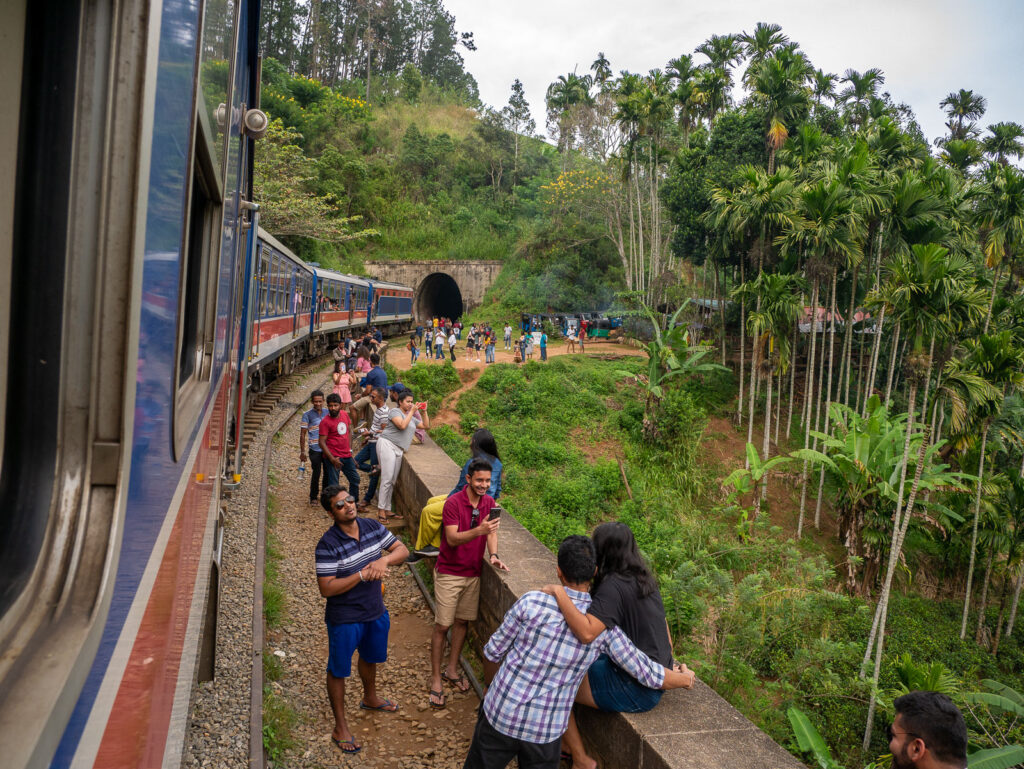
The continuing celebration that is Nine Arches Bridge.
When you show up at the bridge, it feels like that celebration continues to this day. Kiosks have sprouted up nearby selling soft drinks and refreshing water from king coconuts (proprietors will lop off the top of a golden coconut and stick in a straw through which to drink the fresh coconut water), and a small parking lot for the tuk-tuks bringing tourists is not far from the tunnel leading towards Ella. Few places besides surfer beaches such as popular Weligama, or the quaint harbor town of Galle, hold a greater cross-section of different nationalities gathered in one place. It’s a festive atmosphere, especially when a train is crossing.
Mere minutes after getting underway again, we arrived at Ella Station and it felt like the world got on. Our car filled to about eighty percent, but most of the occupants looked Sri Lankan. Other European types came through but apparently settled in cars up-train or in first class. Fortunately, no one bumped us from our window seats.
(To continue, go to Part 3: The Most Spectacular Part of the Ride)

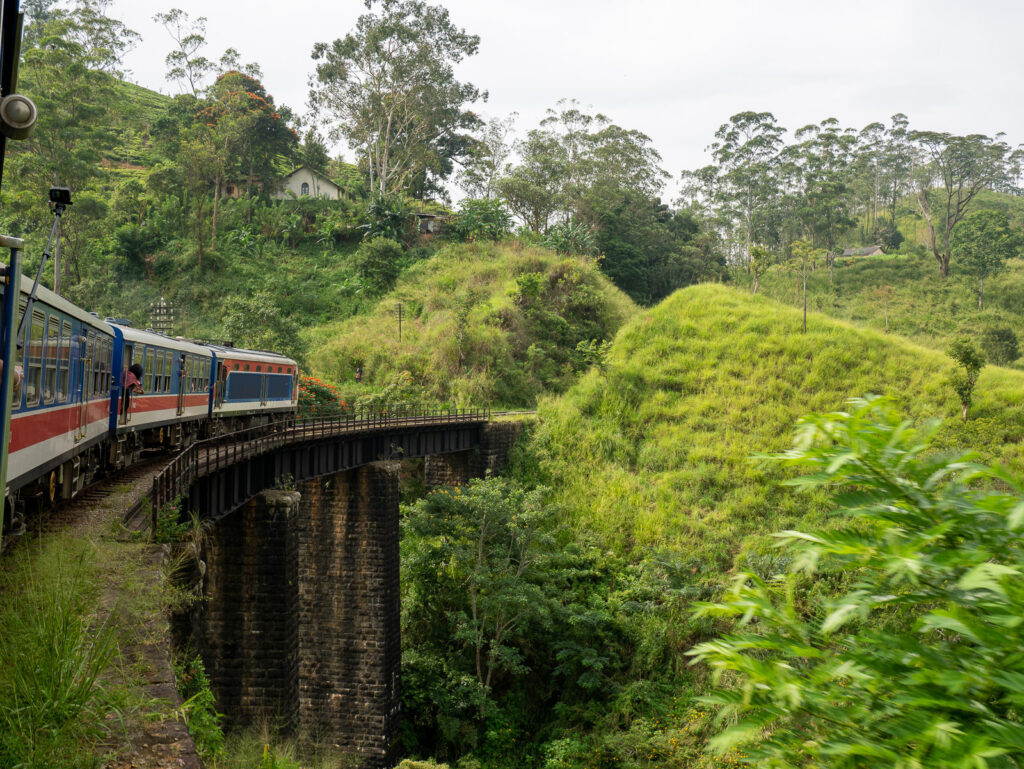
Recent Comments